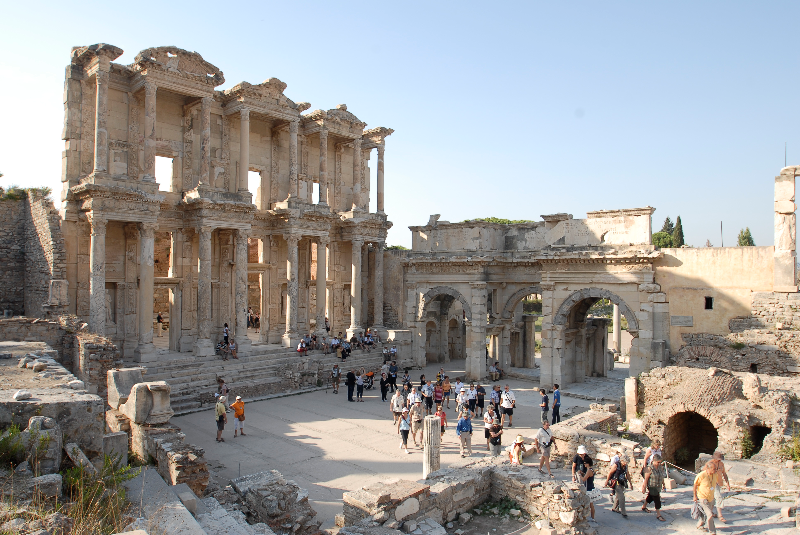
The first establishment of the ancient city of Ephesus, which is within the boundaries of the Selçuk District of İzmir Province, dates back to 6000 BC. In recent research and excavations, on the mounds around the Ephesus (prehistoric settlements on hills) and on the Ayasuluk Hill where the castle is located, settlements belonging to the Bronze Ages and the to the Hittites were identified. In the Hittites Period, the name of the city was Apasas. The city of Ephesus, where also the immigrants from Greece came to live in 1050 BC, was moved to the vicinity of the Temple of Artemis in 560 BC. Ephesus, which is visited today, was founded by Lysimakhos, one of the generals of Alexander the Great in 300 BC. Living its most glorious times during Hellenistic and Roman times, Ephesus had a population of 200,000 people as the capital and largest port city of the Asian province. Ephesus was relocated in the Byzantine period and came to Ayasuluk Hill in Selçuk where it was established first.
What is the most important characteristic of the ancient city of Ephesus?
Ephesus was a major port city, functioning as the main gate between East and West. This position of Ephesus allowed the city to become the most important political and commercial center of the era and to be the capital of the Asia province in the Roman period. Ephesus does not owe its importance only to this fact. The biggest temple of the cult of Artemis, based on the ancient Anatolian mother goddess (Kybele) tradition, is in Ephesus. The Temple of Artemis in Ephesus is considered one of the seven wonders of the world. Ephesus was an ancient Greek city located on the west coast of Anatolia, 3 km far from the present-day Selçuk district and it was an important Roman city. It was one of the twelve Ionian cities during the Classical Greek period. Its establishment dates back to 6000 BC.
Ayasuluk, which was taken by the Turks in 1330 and became the center of Aydınoğulları beylic, began to shrink from the sixteenth century onwards. After the foundation of the Republic in 1923, it became a touristic place with a population of 30,000. As one of the most important centers of the ancient world, Ephesus had always played an important role in terms of civilization, science, culture and art throughout its history. Since Ephesus had moved many times throughout its history, it had spread over a large area. In these ruins, which spread over an area of approximately 8 km², excavation-restoration and arrangement works were carried out; and these are the sections we see today.
1-Ayasuluk Hill (There was the earliest settlement dated to 3000 BC and the Church of St. Jean of the Byzantine period, which is of great importance for the Christian world)
2-Artemision (an important religious center belonging to 9-4th centuries BC; Temple of Artemis, one of the seven wonders of the world)
3-Ephesus (Archaic-Classical-Hellenistic-Roman and Byzantine Period settlement)
4-Selçuk (It was an Seljuk Empire, Ottoman Empire Period settlement and the modern city, which is an important tourism center today, contains the antique settlement), Ephesus, an important center of civilization in ancient times, is today an important tourism center visited by an average of 1.5 million people annually.
The first archaeological excavations in Ephesus were carried out in 1869 by J.T Wood on behalf of the British Museum. Wood's attempts to find famous Temple of Artemis were continued by D.G. Hogarth after 1904. The excavations of the Austrians in Ephesus started in 1895 by Otto Benndorf. The work of the Austrian Archaeological Institute, which was interrupted during the First and Second World Wars, continued after 1954. As well as the work of the Austrian Archaeological Institute in Ephesus, Ephesus Museum carries out excavations, restorations and arrangements since 1954 on behalf of the Republic of Türkiye Ministry of Culture and Tourism.